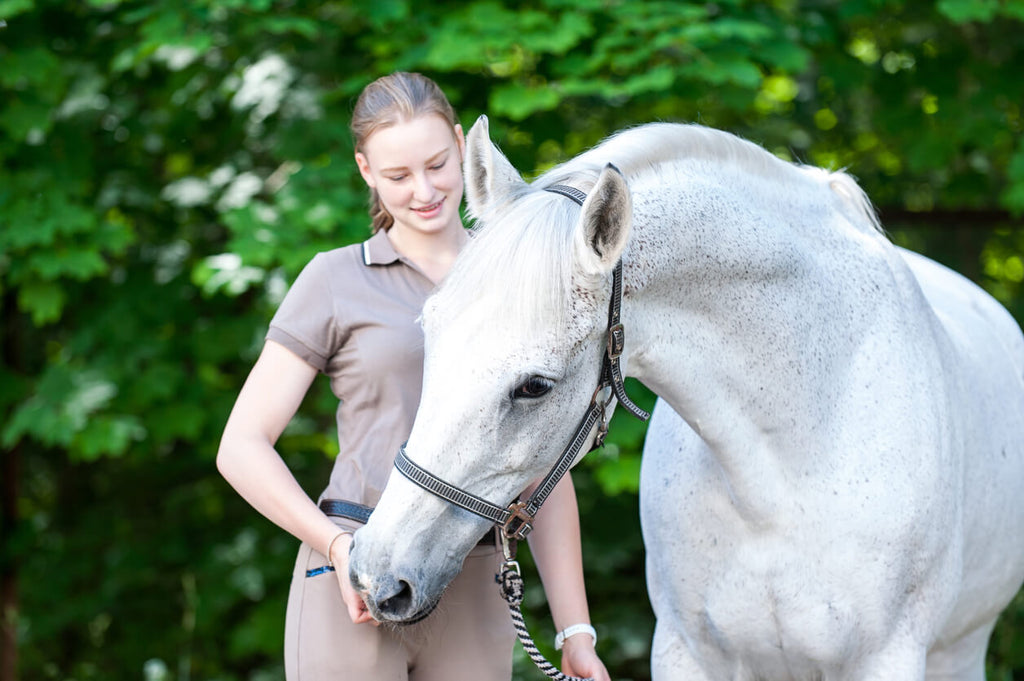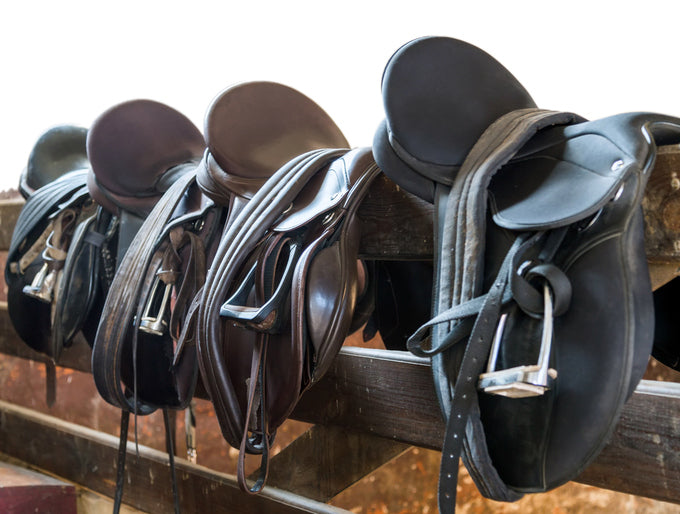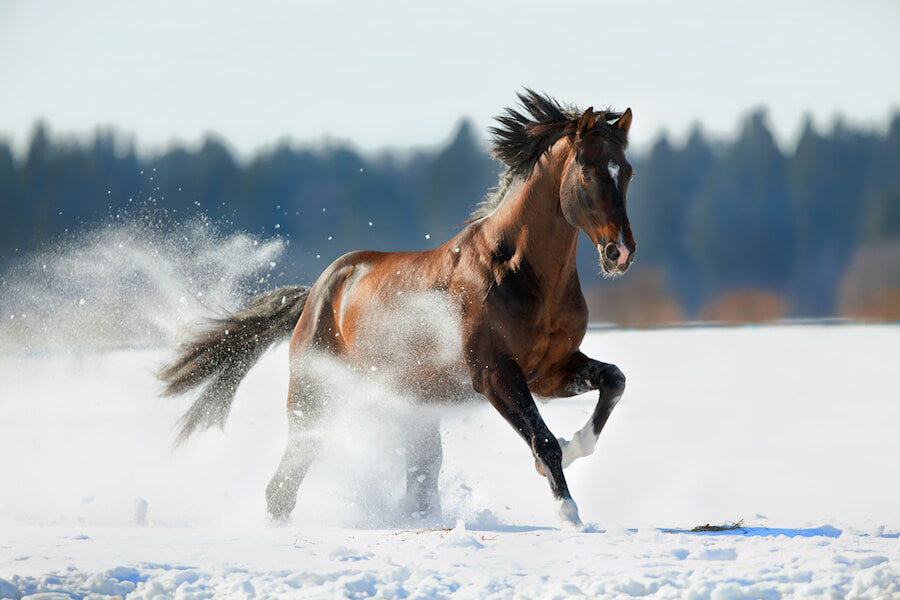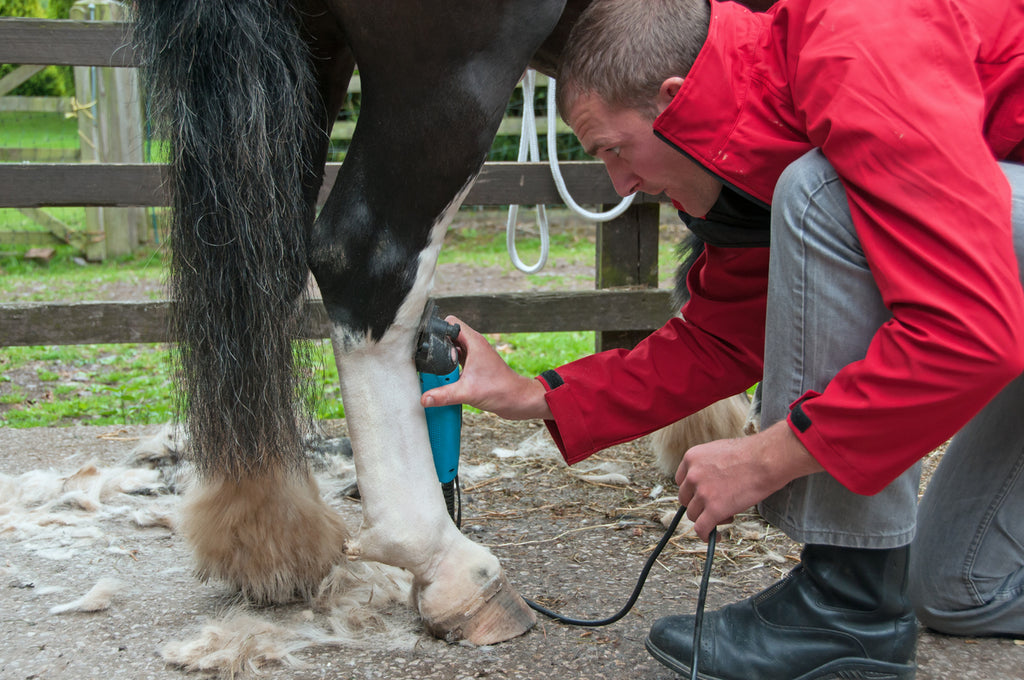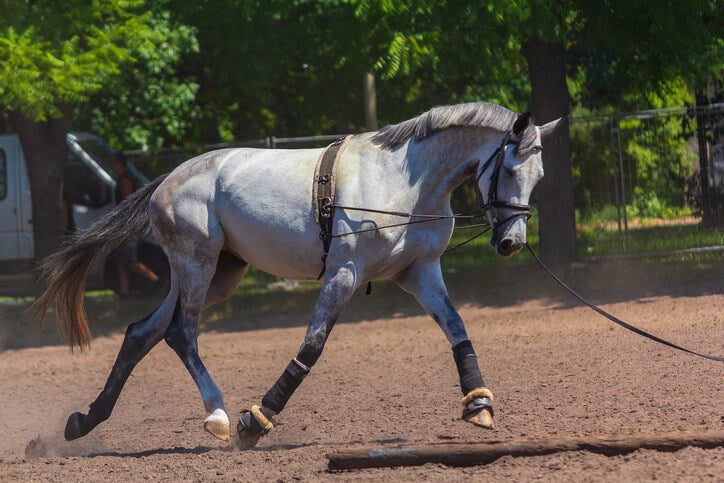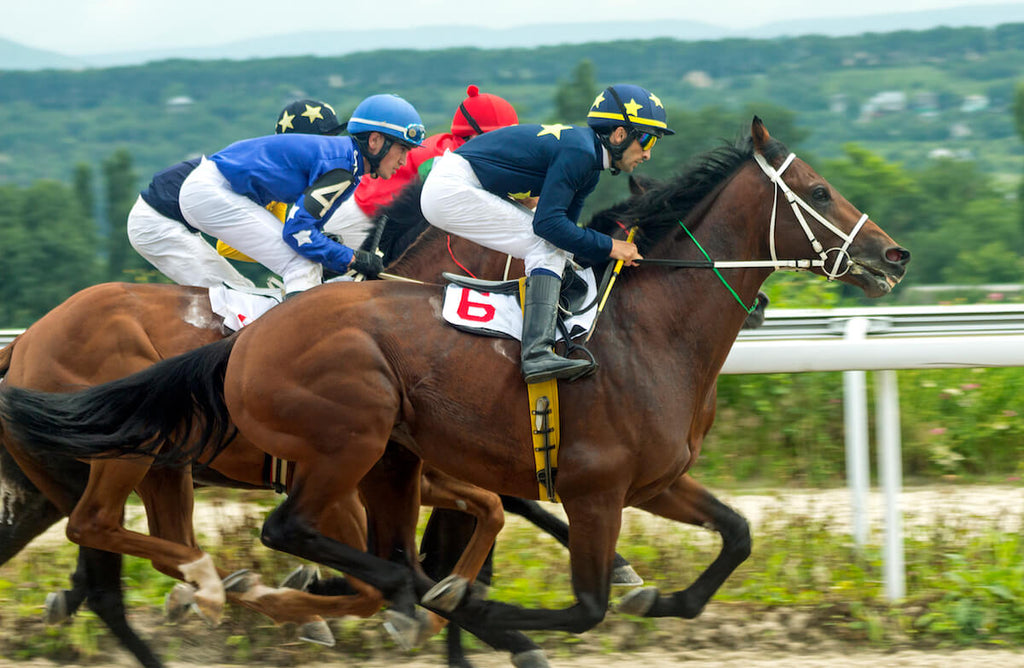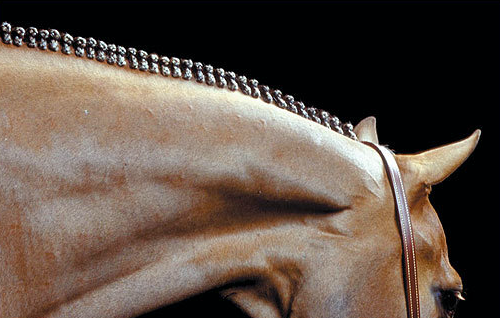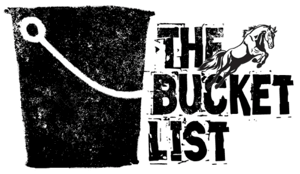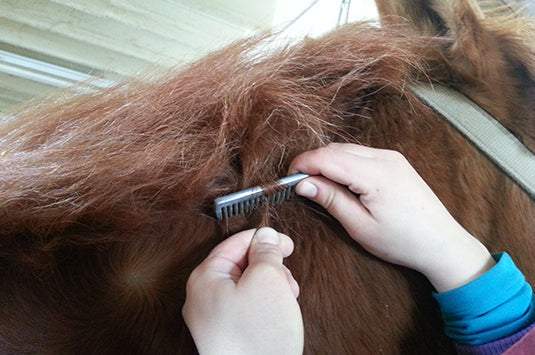HOOF-it Blog
How to choose the right saddle
If the saddle fits - Finding the right saddle for you and your horse
Finding the right saddle is not an easy task. With all of the styles and sizes to choose from, how do you know you're getting the right one for the job?
This is an important purchase so it is equally important to take time and do your research into what kind of saddle you are looking for.
First, you need to know your budget. Saddles come in a wide range of prices, from the low hundreds to the high thousands. Knowing what you are looking for, and what you are willing to pay ahead of time are important. Once you know your budget, then you need to decide what type of saddle you are looking for. Are you riding English or Western? Are you doing show jumping, dressage, cross-country, or are you barrel racing, trail riding or endurance?
Western Saddles
Choosing a western saddle comes down to how much you want to spend, how it fits you and your horse and your personal preferences. They come in many different styles and sizes, but can be used for anything from showing to trail riding.

General purpose saddles
General purpose saddles are designed so you can do most disciplines in them from hacking to jumping.
Most leisure riders will go for this option, you only need one saddle, but if you compete regularly you may be better off looking at a discipline-specific saddle to give you the support that you need.
Dressage saddles
As the name suggests these are designed for dressage and flatwork.
The saddle flap is longer and straighter encouraging you to ride with a long leg position and the seat tends to be deeper to help you maintain a correct position.
There is the option of having large fixed knee blocks through to smaller movable blocks so you can find the most comfortable position for you.
To allow you to have a closer leg contact the girth straps are long and you use a short girth to remove any bulk under your leg so there are no buckles under your leg.

Jumping saddles
These are designed to sit more forward so you can ride with shorter stirrups. They also have shorter flaps because you aren't riding with a long leg as you would in a dressage saddle.
Some will have knee and thigh blocks positioned to help you stay secure and supported when you’re jumping and some do not and they often have a flatter seat.

Endurance saddles
Endurance saddles are for long distance riding so it is important that they are comfortable for you and your horse. Endurance saddles look like a combination of an English and Western saddle and they have no saddle horn like a traditional western saddle. The stirrups are shaped like an English saddles stirrups but they are wide like Western saddle stirrups. They are more cushioned on the underside to be extra comfortable for your horse on long rides and they have more cushion on the upper side for the riders comfort. Choosing an endurance saddle will come down to personal preference as well.
Leather or synthetic?
Once you have chosen what style you need you will want to decide what material your saddle will be made of.
The leather is typically the first choice of most riders. You can't beat the look and feel of a leather saddle and once they are broken in a bit, they are very comfortable and form to your horse.
Synthetic saddles have come a long way since they were first introduced and are sometimes a more economical way to obtain a saddle. They are easily washable and if you're on a tight budget, they are definitely worth looking into.
What about a proper fit?
When it comes to the fit of the saddle on your horse, you want to make sure that it sits nicely over the horse's withers and backbone and that it sits evenly across their back. Take into consideration what type of bone structure your horse has. Look at their top line. Do they have prominent narrow wither, or rounded and flatter wither? Does their back bow or is it straight? Most saddles will mold somewhat to your horse's body, but you always want to be on the lookout for places where the saddle may be rubbing them wrong or pinching them. This will show up as patches of hair rubbed off or even sores if it goes unnoticed for too long.
There are also a variety of pads that you can try under your saddle to address different types of backs. If your horse has a back that bows and is bony, you can add small foam inserts between your saddle and saddle pad to fill in these gaps and give your horse more cushion.
Preparing your horse for winter
Body Clipping Horses
The Thoroughbred Makeover and National Symposium - Retired racehorse project 2018
The 2018 Thoroughbred Makeover and National Symposium, presented by Thoroughbred Charities of America, takes places Oct. 4-7 at the Kentucky Horse Park, Lexington, KY.
Hundreds of off-track Thoroughbreds, each with 10 months or less of retraining and three days of competition in 10 different disciplines are each vying for a share of $100,000 in prize money. Thousands of spectators are watching online and in person, and at the end, one overall winner will be crowned America’s Most Wanted Thoroughbred.

What is the Thoroughbred Makeover?
The Retired Racehorse Project or (RRP) is a charitable organization, created the Thoroughbred Makeover to showcase the trainability and talent of off-track Thoroughbreds. The competition is intended to inspire good trainers to become involved in transitioning these horses to second careers, and the National Symposium serves to educate the people involved in the care, training, and sale of these horses to responsible owners.
This is the only national gathering of the organizations, trainers, and farms dedicated to serving these horses when they retire from racing.

Who can participate?
The Makeover isn’t an ordinary horse show; it’s a training competition. Trainers interested in participating must submit an application to the RRP Makeover Selection Committee for approval, to ensure that all participants are capable of effectively restarting an off-track Thoroughbred and demonstrating its talent and trainability. Participants do not need to be professional trainers, juniors and amateurs are welcome.
Trainer applications closed on January 15 with a record 812 applications! Accepted trainers were announced on February 1.
When evaluating applicants, the selection committee takes into consideration the need for adequate representation within each discipline; the need for representation by professionals, amateurs, and juniors; geographic diversity; affiliation with institutions that are committed to RRP’s mission; and evidence that the trainer is committed to RRP’s mission.
Trainers may compete up to two horses apiece, but do not need to have obtained the horse they intend to compete at the time of application.

What horses are eligible to compete?
Because the Makeover is a training competition designed to evaluate a horse’s progress in a prescribed period of time, the eligibility requirements are set to ensure that all horses are of similar experience at the starting point. Horses must meet these requirements to be eligible:
- Registered with The Jockey Club and have a lip tattoo or microchip.
- Raced or had a published work on or after July 1, 2016.
- Not have started in training for a second career before December 1, 2017 (other than a maximum of 15 allowable rides).
The RRP has a strictly enforced horse welfare policy in effect at the competition, which covers horse protection, abuse and neglect, soundness, and body condition. Trainers agree to adhere to the United States Equestrian Federation’s Guidelines for Drugs and Medication, and random testing will take place.
How is the competition structured?
Ten competitive disciplines are offered at the Makeover: barrels, competitive trail, dressage, eventing, field hunters, polo, ranch work, show hunters, show jumpers, and freestyle (a free-form division to demonstrate skills of the trainer’s choice). A horse may be entered in up to two disciplines.
First, the preliminary round where each competitor receives a preliminary round score, and the top five in each discipline advance to the finale, which takes place in the Covered Arena and is broadcast via Livestream.
Each discipline competes separately in the finale, and each has their own final test to determine the Makeover Champion in that discipline. The crowd favorite (determined by text message voting) from among the 10 discipline winners is then crowned America’s Most Wanted Thoroughbred and earns a $10,000 check!
What does the National Symposium include?
They offer several educational seminars and panel discussions dedicated to the care, training, and marketing of off-track Thoroughbreds. They also offer several mounted clinics that are open to Makeover competitors.
An extensive vendor fair also runs concurrently with the competition.
What is the Makeover Horse Sale?
Many Makeover trainers take on off-track Thoroughbreds as resale projects, and the Makeover provides a unique opportunity for horse-shoppers to see dozens of thoroughbreds successfully competing in a second career, and all in one location.
The RRP has endeavored to help market and facilitate the private sale of these horses by highlighting them at the competition. There they wear special bridle numbers, are advertised on their website, and a printed sale catalog is available to spectators. Designated areas are available for shoppers to try sale horses, and local veterinarians are on stand-by and available to perform pre-purchase exams on site.
About one-third of the horses competing in 2017 were available for sale. All sale contracts are private but are required to include no-slaughter and notification of resale restrictions.
Fast facts about the 2017 Thoroughbred Makeover:
- 578 trainers were accepted to compete during the initial application process, and 509 horses were registered.
- 305 horses actually made it to Kentucky to compete, coming from 38 U.S. states and two Canadian provinces.
- The most-raced horse in the competition had 85 starts. The highest money-earner had career winnings of almost $1.2 million.
- Total number of horses in each discipline: barrels, 18; competitive trail, 64; dressage, 78; eventing, 90; field hunter, 30; freestyle, 38; polo, 11; show hunter, 84; show jumper, 75; working ranch, 12.
- 100 horses were entered in the Makeover Sale, and 22 were confirmed sold within a month of the competition. The high price was $21,000; the average price was $8,800.
- More than 115 volunteers helped staff the competition.
- 72 companies were Makeover sponsors.
- 71 vendors took part in the vendor fair.
- Over 1200 ticketed spectators watched the Finale.
- The finale Livestream had more than 7,200 viewers, and 62,000 viewers watched on Facebook Live.
- 899 votes were cast for America’s Most Wanted Thoroughbred.
Overview
The Thoroughbred Makeover is a $100,000 competition in which hundreds of trainers acquire a recently retired racehorse and prepare it over a period not to exceed ten months for competition in one or two of ten riding sports. Formats for the competition are designed to test the quality and progress of each horse’s training.
The Thoroughbred Makeover and National Symposium takes place at the Kentucky Horse Park October 4-7, 2018. It includes seminars, sponsor fair, horse sale, and the Thoroughbred Makeover itself.
The Thoroughbred Makeover and National Symposium is organized by the Retired Racehorse Project (RRP), a 501(c)3 charitable organization dedicated to facilitating placement of Thoroughbred ex-racehorses in second careers.
Mission and Goals
The RRP created the Thoroughbred Makeover to showcase the trainability and talent of off-track Thoroughbreds, and to inspire trainers to secure the futures of these animals through training. In addition to benefiting the horses, the makeover is intended to help trainers establish themselves professionally or as amateurs in their respective disciplines. Without good trainers, Thoroughbred racehorses cannot become great riding horses.
The Makeover also serves as the only national gathering of the organizations, trainers, and farms dedicated to serving these horses when they retire from racing. The event will evolve over time to meet the needs of these groups.
About the Makeover Horse Sale
Horse shoppers! Instead of spending multiple weekends driving hours away from home to see one horse (or maybe two or three if you’re lucky) at a time, plan a trip to Kentucky for the Thoroughbred Makeover. Dozens of off-track Thoroughbreds, many with professional trainers, that have all been restarted in various disciplines. You can see, try, and buy, all on-site and all in one weekend!
At the 2017 competition, approximately one-third of the 300 horses competing were for sale. Twenty-two of those were confirmed as sold within a month of the competition, with prices ranging from $3,000 to $21,000. To date, the average sale price of 2017 Makeover horses is $9,100.
“This is a great place to shop for young horses with upper-level potential,” said eventing professional Bill Hoos at the 2017 Makeover. “Usually you have to travel to California to look at one horse, Canada to see another. Here you see so many in one spot. This is a great horse shopping opportunity. It makes things much simpler and easier."
The Makeover horse sale is not an auction — all sales are private contracts between the buyer and seller. RRP is not involved in the sale and does not receive any commission.
Sale horses are designated with special green bridle numbers, and they also provide a sale catalog with photos, pedigrees, and descriptions, as well as the seller’s contact information and the horse’s stall number and ride times. You can arrange to see horses before the competition begins, and watch them warm up and compete.
Buyers can arrange for trial rides (usually after the competition is over), and veterinarians from the Hagyard Equine Medical Institute are on-call to perform pre-purchase exams during the Makeover.
Competing trainers who decide to participate will enter their mounts in the sale approximately six weeks before the event. Sale horses will be listed on the website and promoted on RRP’s social media. Some horses may sell even before the event takes place.
Repurposing a racehorse. How to adopt a race horse and giving them a new life and purpose.
Finding life and purpose after a racing career for horses can be challenging, but there are many organizations now that are making a change and contributing to the success of these horses finding a new life after the track. This blog will cover some facts of what happens to retired thoroughbreds and also resources if you are interested in adopting one of these amazing athletes and giving them a new purpose in life.
The Jockey Club, the national registry of thoroughbreds headquartered in Lexington, Ky., reports that approximately 35,000 thoroughbreds are foaled in North America each year, 68 percent of which are destined for a career on the racetrack. Of those horses, nearly 70 percent will win at least one race, but only 5 percent will win a bigger-pursed stakes race, and only two-tenths of a percent will win a Grade I stakes race, which awards the biggest purse and creates the biggest superstars.
Thousands of racehorses retire every year and suddenly find themselves displaced with nowhere to go. Most people assume that a racehorse will retire to a life of being a stud or broodmare and will enjoy the pastured life while they sire the next generation of winners, but this is not always the case.
For every horse winning millions in front of sold-out crowds, there are unheralded thoroughbreds that also race their hearts out each day, but for small purses on cheaper tracks to nearly empty stands. Eventually, lackluster performance or an injury ends these horses' careers. At least 3,000 such racehorses are retired each year, usually by age 6 if not younger, the Thoroughbred Retirement Foundation estimates. Given that most horses live well into their 20s, the question of what to do with them for the next 15 or more years looms. Unfortunately and frequently, the answer is one most horse lovers would rather not think about: Approximately two out of every three thoroughbreds that come off the track, even those that are sound and healthy, are euthanized, abandoned on public land or in empty fields, or slaughtered and their meat is exported to Europe and Japan for human consumption.
The closure of horse slaughterhouses in the United States in 2007, after Congress barred the Department of Agriculture from using funds to conduct horse slaughter inspections, did not diminish the phenomenon much. The USDA estimates that more than 90,000 horses were exported to Canada and Mexico last year for slaughter. The Livestock Marketing Association, which advocates the resumption of horse slaughter in this country, puts the number at more than 120,000. By contrast, in 2006, horse slaughter in the United States and the export of horses for slaughter tallied about 150,000, according to the USDA.
Efforts to stop horse slaughter have gained momentum in recent years as public awareness has grown. Last year in the House and Senate, bills were introduced that would prohibit trafficking in horses for human consumption of their meat. In December, the New York Racing Association announced that it would ban any trainer or breeder who sells a horse to slaughter. Other mid-Atlantic racetracks also have no-slaughter policies on the books, including Pimlico and Laurel Park in Maryland, Colonial Downs in Virginia and Charles Town and Mountaineer Park in West Virginia.
The successful racing career of a colt or stallion who has won some notable races will most likely be shorter, where owners prefer to put him to stud before they must geld him or he suffers injury. A horse of this caliber must race and win only a few races to confirm his talents before he is put to stud.
Most often a colt must be gelded at around 3 or 4 years of age (depending on maturity) in order to continue his racing career. Unless a colt is particularly successful and/or comes from a very popular or respected bloodline, chances are that horse will be gelded to continue racing as he would not be a popular or high earning stallion anyway.
Most successful geldings can race until 7 or 8 years old, sometimes even older.
Mares can continue racing till that age too. However, mares can be much moodier than geldings and some become broody and lose interest in racing before they reach 5 or 6. Other mares and geldings will let you know soon enough if they don't want to race anymore, and it happens. They refuse to jump out of the starting stalls or amble along at the back of the field as though they are sightseeing. This is a sure sign that the horse just doesn't enjoy the racing experience anymore. Some horses really enjoy their race day outings so if they are successful on the track, it is an easy decision to let them continue racing.
There are many organizations that rescue and re-purpose these racehorses and give them a new opportunity to enjoy the rest of their lives. These are just a few listed below.
How to Braid a Mane
15 horsey things to do before you die
Most people have a bucket list of things they would like to experience in life, so here is a list of 15 great horsey things all riders should try at some point. How many of these fun horsey ambitions can you claim to have done?
1. Watch the Grand National in person
How: If you’ve never ventured up to Aintree, this is a must. This season, the great race is on Thursday 4 April (2019), to find out more (tel: 0844 579 3001) or visit www.aintree.co.uk
2. Swim with your horse in the ocean
How: The British Horse Society has produced a PDF guide, to suitable beaches around the country, or find out which beaches H&H readers’ recommend for a location near you.
3. Ride out for a racehorse trainer
How: Manage an introduction and convince them that, perched atop half-a-ton of galloping horse, you’ll be able to restrain its power. Or, if you’re already confident, apply for a work rider vacancy. National hunt trainers do not require you to be a featherweight.
4. Ride side saddle
How: Learning to ride side-saddle is a completely different riding experience. If you want to give it a go, the Side Saddle Association can help.
5. Go on a horseback safari
How: An African safari is the rider’s equivalent of swimming with dolphins. The Okavango Delta in Botswana is a wilderness paradise of lagoons, islands and forests with the best game viewing in Southern Africa. Kenya, Tanzania, Namibia and South Africa also offer great riding experiences.
Check out these websites for some more information:
6. Have a go at the Golden Button challenge
How: If you’re an equestrian adrenaline junkie then look no further than the three mile race over Ledbury hunt country held in February. Anyone can enter — there’s just 28 obstacles between you and the finish line. Visit the Golden Button website for more details.
7. Ride flying changes
How: If you’re desperate to experience flying changes then try booking a lesson or two! Just look in your local newspaper or google lessons in your area. Make sure you call and find out what kind of facility you are going to and if they have lesson horses that can accommodate what you're looking for.
8. Try Reining
How: Fancy embracing your inner cowboy/girl? Then why not give reining a try! From spins to sliding stops reining could offer you a completely new equestrian experience. For more information visit NHRA.com for more information.
9. Go hunting in Ireland
How: There are plenty of ways to fulfill your dream of hunting in Ireland, like booking in for a holiday.
- Louis Murphy, manager of the Dunraven Arms Hotel in Co Limerick, organizes hunting package holidays. There’s a choice of nine legendary Irish packs such as the Tipperary and the Galway Blazers to join for a day out. Visit the website or email reservations@dunravenhotel.com for more details on packages available.
- Flower Hill House in Co Galway organizes accommodations, hunting and horse-hire with the East Galway and other packs. Cost: cap: around €100; horse-hire: around €130. Visit the website
10. See a horse sold for more than a million
How: For astronomical prices, head to Newmarket or Kentucky. In the US, the Keeneland July and September sales are the biggest and in England, you could be lucky enough to witness such sales as the filly who sold for a record price of 4.5 m guineas in 2014.
For more information, look here:
- Tattersalls, Newmarket — or call 01638 665931.
- Keeneland, Kentucky, USA — or call 1 859 254 3412.
11. Try vaulting lessons
How: If you’ve got a pair of leggings and some pumps to wear, you can try your hand at vaulting. You won't need your own horse. For more information check out F.A.C.E. (Free Arts Creative Equestrians) 818-429-2115 or google for vaulting lessons in your area.
12. Herd cattle across the plains in Montana
How: This one’s not cheap, but definitely an unmissable experience — browse these websites for some more information:
- Ranch America — or call 020 3588 6032.
- 1880s Ranch — or email Sherri Jamison on sherrijamison@aol.com to find out more.
13. Watch the Spanish Riding School
How: Under glittering chandeliers, the famous white Lipizzaner stallions perform the purest form of dressage in Vienna. As well as the evening performances, don’t miss their morning training sessions. Take a look at the Spanish Riding School website.
14. Go to a team chase
How: The season typically runs from the end of September to the beginning of November, then from the end of February to the beginning of April. Interested in having a go at team chasing? For more information visit www.teamchasing.co.uk.
15. Jump bareback
How: If you want to give it a go, the answer is to start small, build up and practice, practice, practice. Just remember, canter is more comfortable than trot! If you feel insecure riding with no saddle, start on the lunge so you can concentrate on your position rather than what the horse is doing.
There are many other exciting things to see and do that are horse related so get out there an experience some true equestrian fun!

